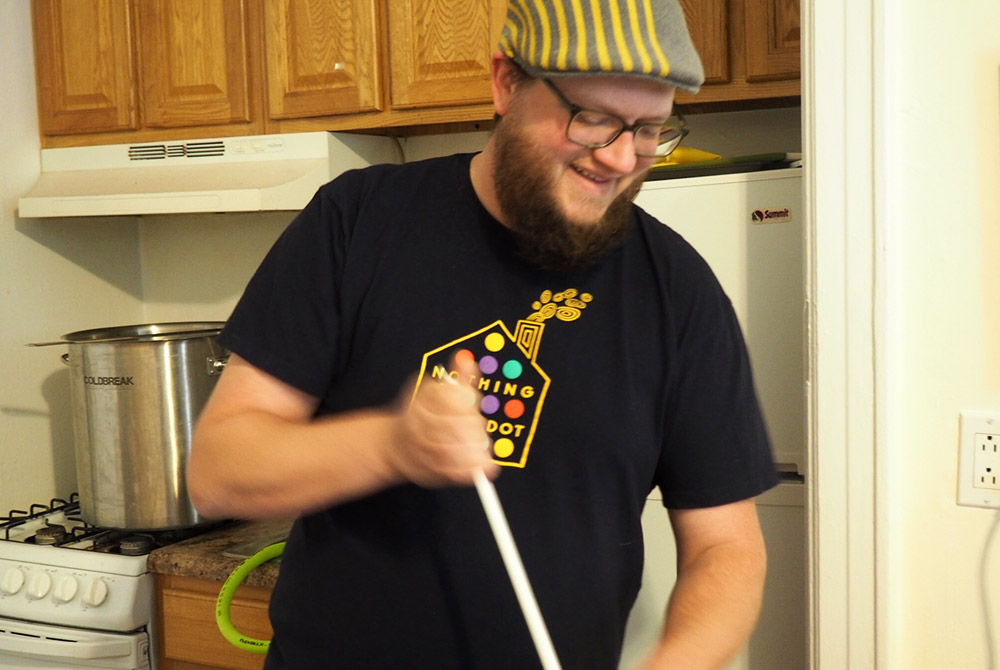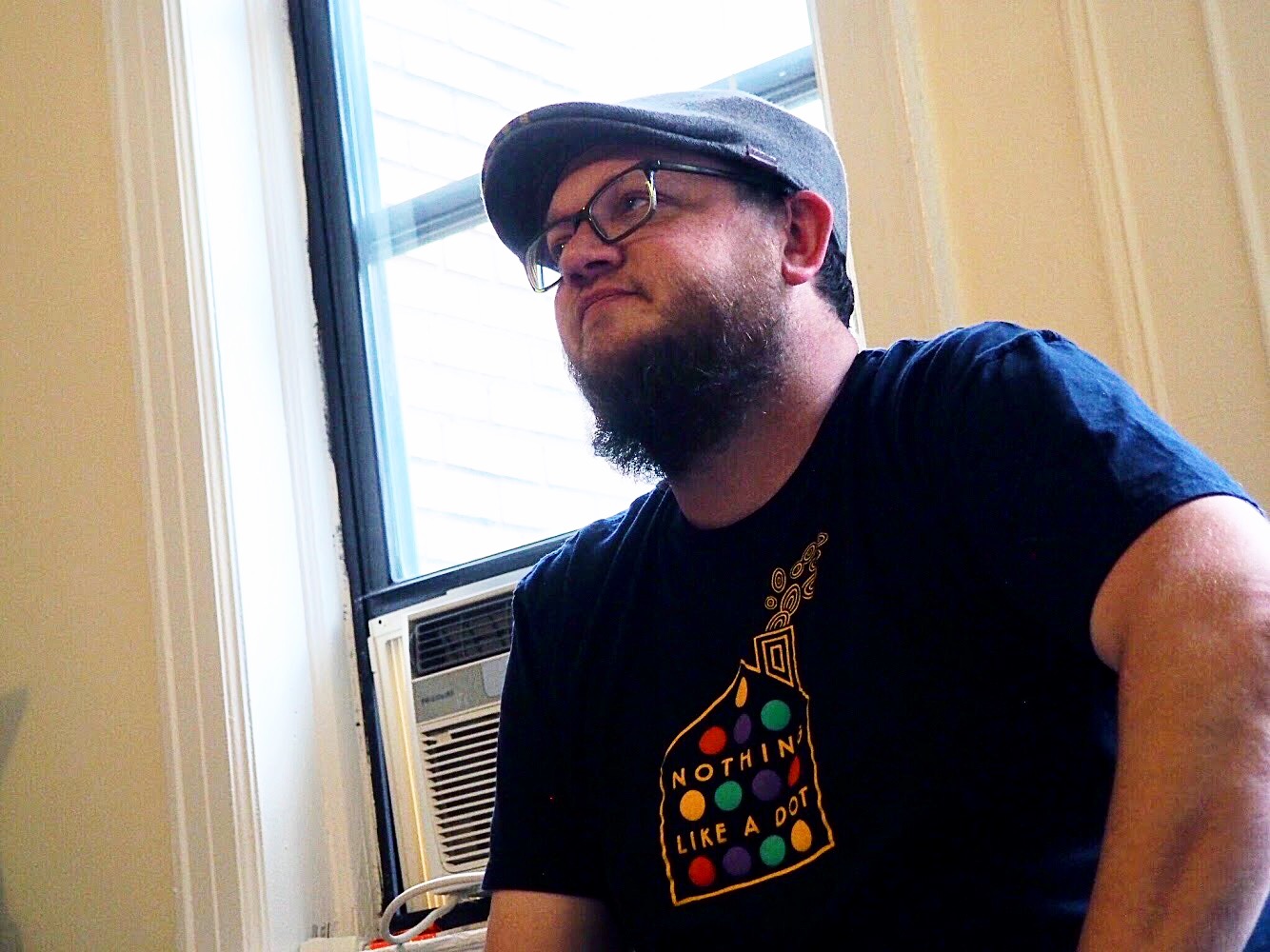The Back to Basics series brings head brewers from around world back to a place where most of them first fell in love with the art of brewing: the home brewing. For each chapter in the series I, along with my friends and long-time homebrewers Andrew Berman and Matt Federico invite a new professional brewer into our brew house in Astoria, Queens to discuss the route that got them to where they are today. Today we’re brewing with Brandon Tolbert, head brewer at the Answer Brewpub to discuss his journey and where he’s going next.
“It’s been quite some time since I’ve done this,” Brandon Tolbert mentions as he walks into our “brew house” – a 500 square foot one-bedroom apartment in Queens. Brandon, a familiar face for many in the craft beer scene, has been the head brewer at The Answer Brewpub in Richmond, Virginia since they first opened their doors in 2014. With Brandon at the helm of their award-winning brewing program, The Answer has become one of the most popular craft beer destinations in the country. However, what many beer lovers aren’t aware of is Brandon’s time before The Answer, as a home brewer, and how he practically overnight was forced to transition from home-brewer to head brewer.
For each piece in this series we look to recreate a beer from our guest’s past, whether it’s a beer they’ve always dreamt of brewing or one that represents what the brewer likes to brew. For Brandon, we chose an imperial porter. While Brandon has always been an IPA guy, it’s his non barrel-aged imperial stouts that have beer nerds around the country posting ISOs (“In Search Of”) all over beer trading boards. We wanted to trend towards his darker style, but throw a curve to make the brew unique.
To create our recipe we took an imperial porter I had previously brewed as a starting point. Using Brandon’s professional knowledge, and Andrew and Matt’s (our trusted brewing assistants) knowledge of their homebrew system, we decided on adjustments to the recipe and process to develop the beer we wanted to brew – a big imperial porter where chocolate would be the dominant flavor, with notes of coffee malt, before treating the beer with adjuncts of Brandon’s choosing.
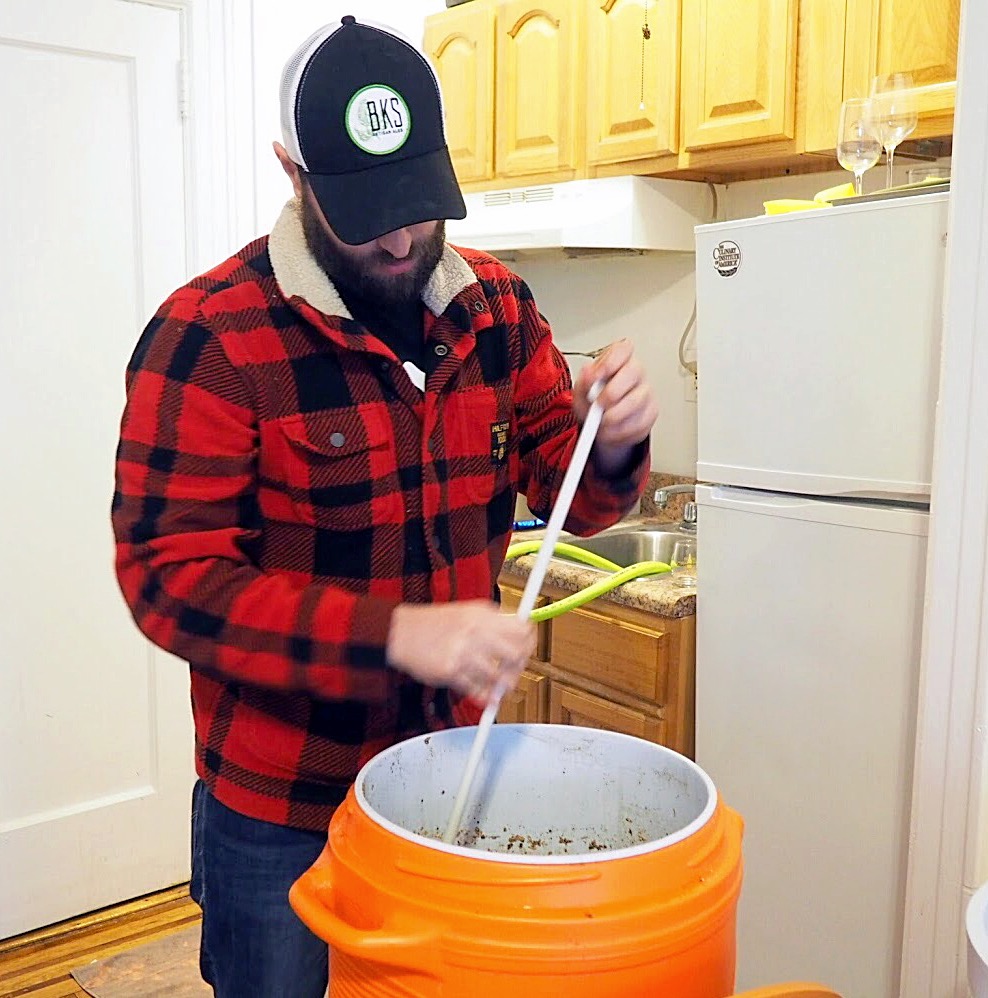
The author, Jason Stein
Fifteen years ago, Brandon set out to brew his first beer. “I had friends that were making beer at the time, and I was into craft beer at the time,” Brandon says. “Quite frankly, I just thought it would be cool to make your own alcohol,” Brandon says.
Brandon’s wife had purchased a home brewing kit, and his friends decided they would try to brew a Newcastle clone together. “So we were doing an English Brown ale…and well we totally fucked it up,” he says laughing. “It was our very first brew-day and we had all started drinking, thinking we were cool, and that to make beer you had to drink beer,” he says. “So my friend at the end of the boil tells me, we add the yeast now, and I was drunk and had never done it, so I was like ‘yeah?!'”
For those haven’t brewed before, once you finish your boil you need to quickly chill your wort to prevent certain off-flavors and to get to a temperature low enough to pitch your yeast. By adding their yeast at the end of the boil, Brandon and his friends essentially killed their yeast on impact. “Five minutes after my friend goes, ‘no…I think we were supposed to cool that down,’” Brandon says laughing still. “So we just poured it out, and that was the first beer I’ve ever made.”
Luckily for Brandon, his second brew-day turned out much better than the first. Mostly because this time they remembered to cool down their wort first before they pitched their yeast. At the time, Brandon was following a partial extract brewing process. When following a partial extract brewing process, you essentially steep your grains into your mash tun, and then add either dry or liquid malt extract during the boil. For the first two years, Brandon and a close friend continued to brew on their partial extract system until the friend moved, leaving Brandon to continue on his “exploration” of homebrewing alone, he tells me as we walk to the stove to check the temperature for our first mash.
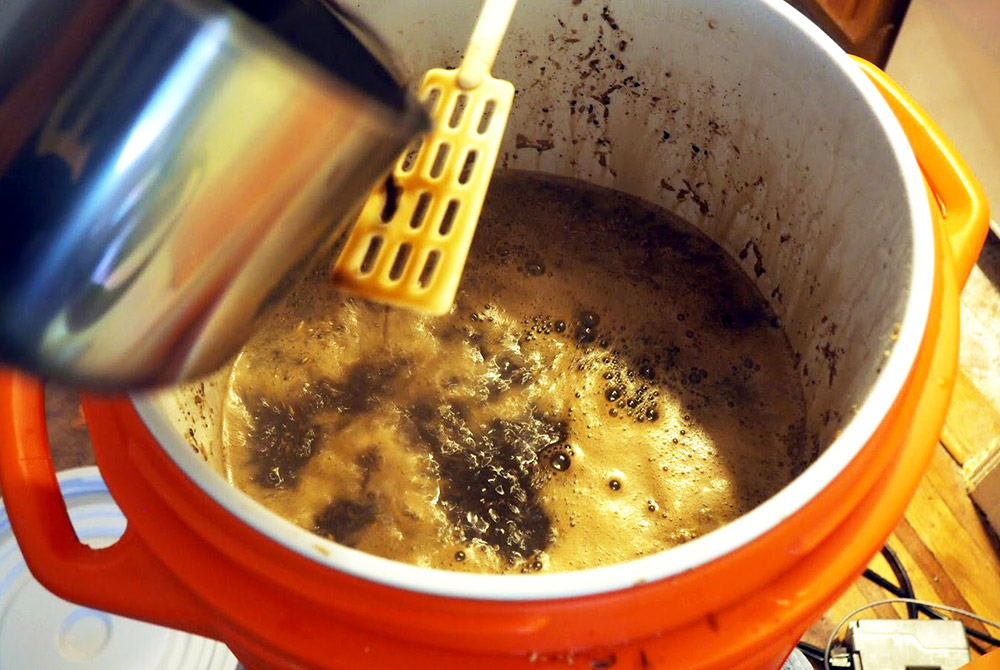
The process we are following today is known as all-grain brewing. Our “mash-in” temperature for our beer is 156 degrees. Once we hit that, we dump our water into a Gatorade jug we use as a mash tun with our first half of grains. To make such a viscous beer, we are doing what is called a double mash. This means rather than your normal mash, we are doing two separate mashes, each with half of our grains. A double mash is a process used when you can’t actually fit the full amount of grains and water volume needed for a beer in your mash tun, and you don’t want to use a large amount of sparge water to hit that volume. By doing two separate mashes and then blending the mashes pre-boil, your wort is more concentrated so that you can hit the gravity needed for a big beer.
While Brandon started doing partial extract, he made the change to all-grain when he started brewing solo. Brandon’s career as a homebrewer quickly escalated when he joined a local homebrew club and began submitting his beers into competitions.
“The club was trying to arrange a competition with this local spot called Extra Billy’s, where the winning recipe would be allowed to brew a beer on their system,” Brandon recalls. “While they were trying to figure out this competition, Extra Billy’s decided to fire their brewer without having a backup plan,” Brandon says. The owners of Extra Billy’s asked Brandon’s friend, who was the head of the homebrew club if he knew anyone in the homebrew club that could fill the position, and Brandon’s friend just submitted Brandon’s name without his knowledge.
After a series of interview, Brandon was hired to become Extra Billy’s next head brewer. It was a huge change practically overnight for Brandon. “I went from this homebrewer to pretty much head brewer for a 7 barrel brew house,” Brandon. “I had no idea what I was doing, and neither did the owners at the time,” Brandon says laughing. “I had one week to figure out what the hell I was doing, so I quit my job in the ink industry, and started going to Extra Billy’s,” Brandon says as we make our way through our second mash.
While his career took off quickly, our brew-day has not. It’s already 2 p.m. when we realize that we are slightly below our target pre-boil gravity, so we decide to extend our boil time to reach our estimated gravity, and take the chance that we’ll finish with less volume. It’s 3 p.m. when we finally start hitting a boil. Now we have two hours to chat as we wait for our wort to be ready to chill.
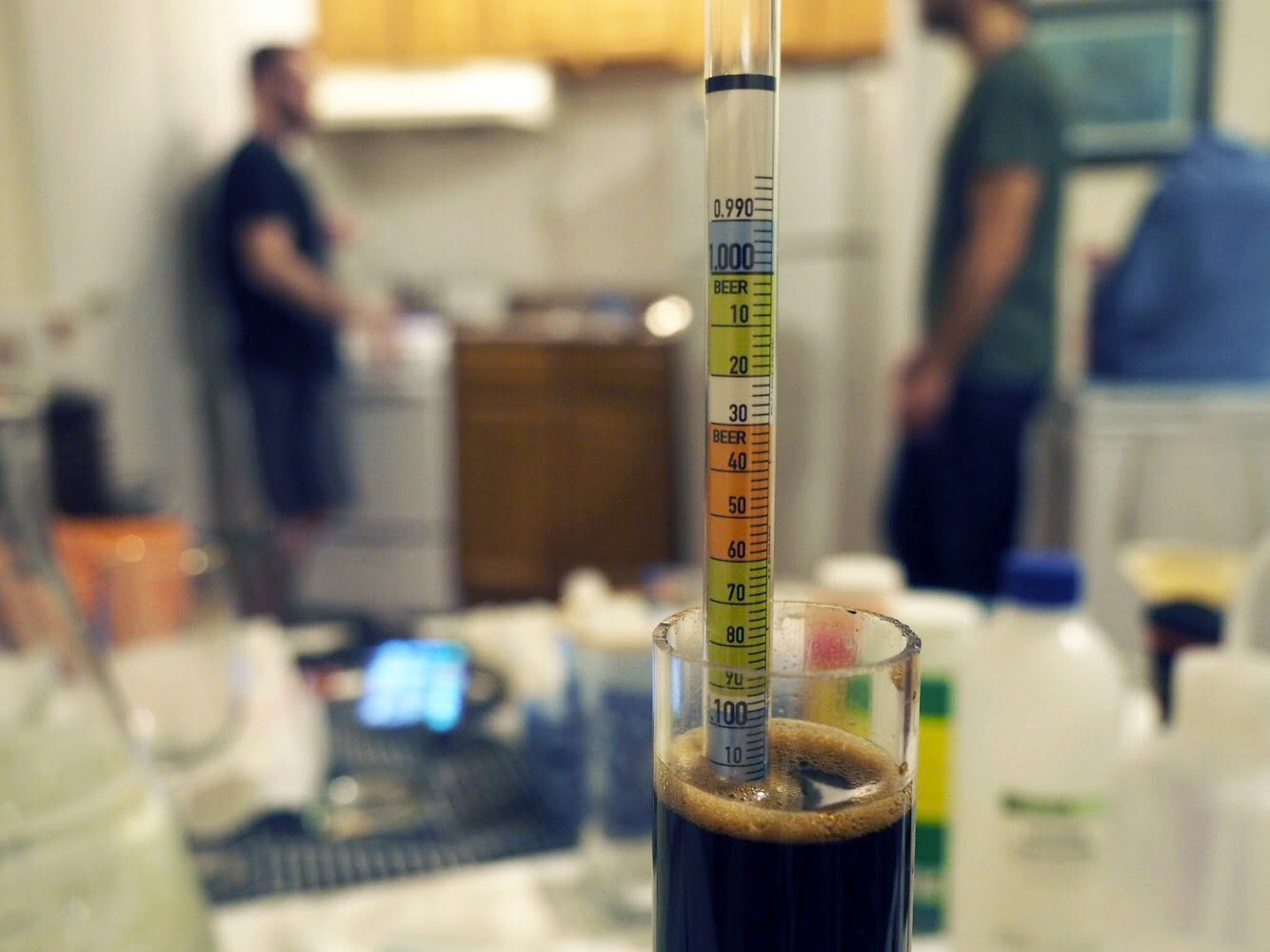
About six months into Brandon’s stint at Extra Billy’s he entered one of his IPAs into the Virginia state competition, and ended up winning gold. “That’s how I began to get recognition in the state, nobody had heard of Extra Billy’s and all of a sudden we are winning gold with an IPA,” Brandon says. After a little over a year working at Extra Billy’s, Brandon began to talk to then owner of Mekong An Bui about coming to work for his new brewery. Mekong was one of the first craft beer bars in Richmond, opening in 1995. Brandon had been close with An for some time, and used to bring his homebrews to Mekong to share over the years. “Everyone would go to Mekong at that time, and still does,” Brandon says. “It was and is a central spot for beer in Richmond,” he goes on to say.
“We spent months talking about it outside of Mekong late at night,” Brandon says of his conversations with An leading up to the creation of the Answer. The name The Answer was actually Brandon’s idea. The slogan for Mekong had been “Beer is the Answer,” so Brandon mentioned to An, “I mean we are going to be making beer, why don’t we just call the brewery The Answer?” In June 2014, Brandon became the first employee of The Answer Brewpub.
Brandon’s position at The Answer threw him directly into the national spotlight. He began the brewery focusing on his specialty, his hoppy concoctions. In came the Larceny series – Petty Larceny, Larceny, and Grand Larceny. Four months into his time at The Answer, Brandon entered Larceny into the Virginia State Competition winning both Gold and Best in Show. “For Virginia, this was always won by Devil’s Backbone, so we were the first to really dethrone them from their title,” Brandon says, which started to get him some more recognition as a brewer. “The judges were mostly old school, so the fact that an IPA would win best in show was really a big deal,” Brandon says as we drop our wort chiller into our kettle with 10 minutes left in the boil.
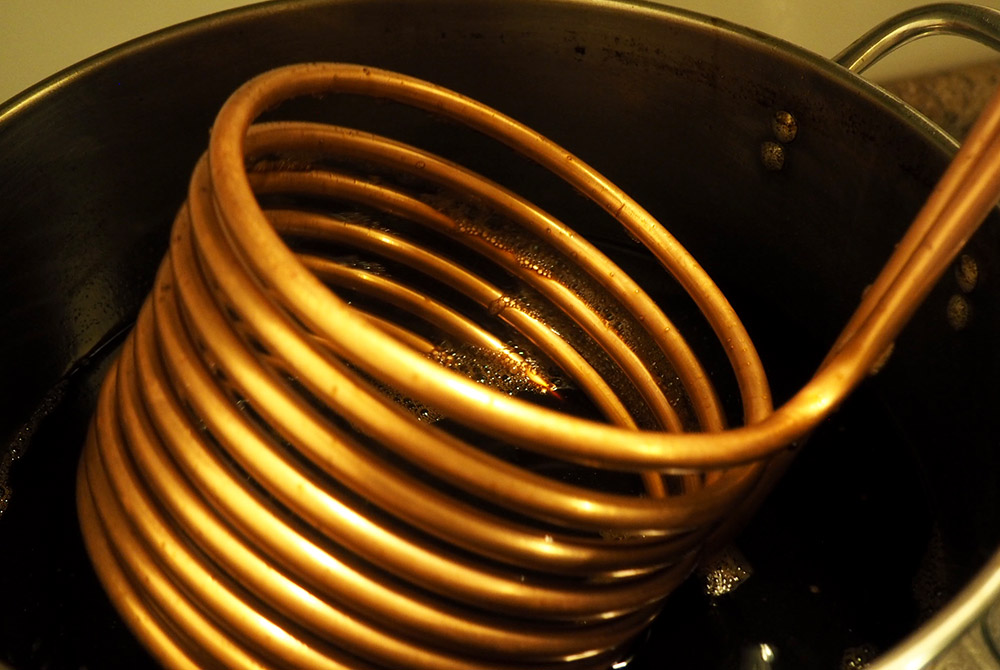
We take a small sample of our wort to check our gravity, and sure enough, we hit the 1.120 we were shooting for on the nose. As we turn off the stove, we begin to quickly stir our wort chiller in our pot to bring our wort temperature down from 212 degrees to 60 degrees. The yeast we are using has a temperature range of 62-72, so we need our wort on the lower end before we pitch our yeast. After 10 minutes of stirring with our chiller, we set up our sanitized fermenter on the floor to allow us to transfer our wort from our pot. Andrew sticks a siphon into our wort which acts as a pump as Matt holds the other end of the tubbing in our fermenter. The whole process takes about 15 minutes as our thick-as-motor-oil wort slowly drips into our 7-gallon fermenter. While it’s already been a long day, Brandon is used to it, as his stouts usually boil for at least four hours.
For Brandon, it wasn’t until mid to late 2016 that people truly started to recognize those stouts he spent so much time on. “It was probably either Broken Bird or Dead Thumb that people finally realized,” Brandon says of two beers that were brewed in October and August of 2016, respectively. Things only got crazier for Brandon.
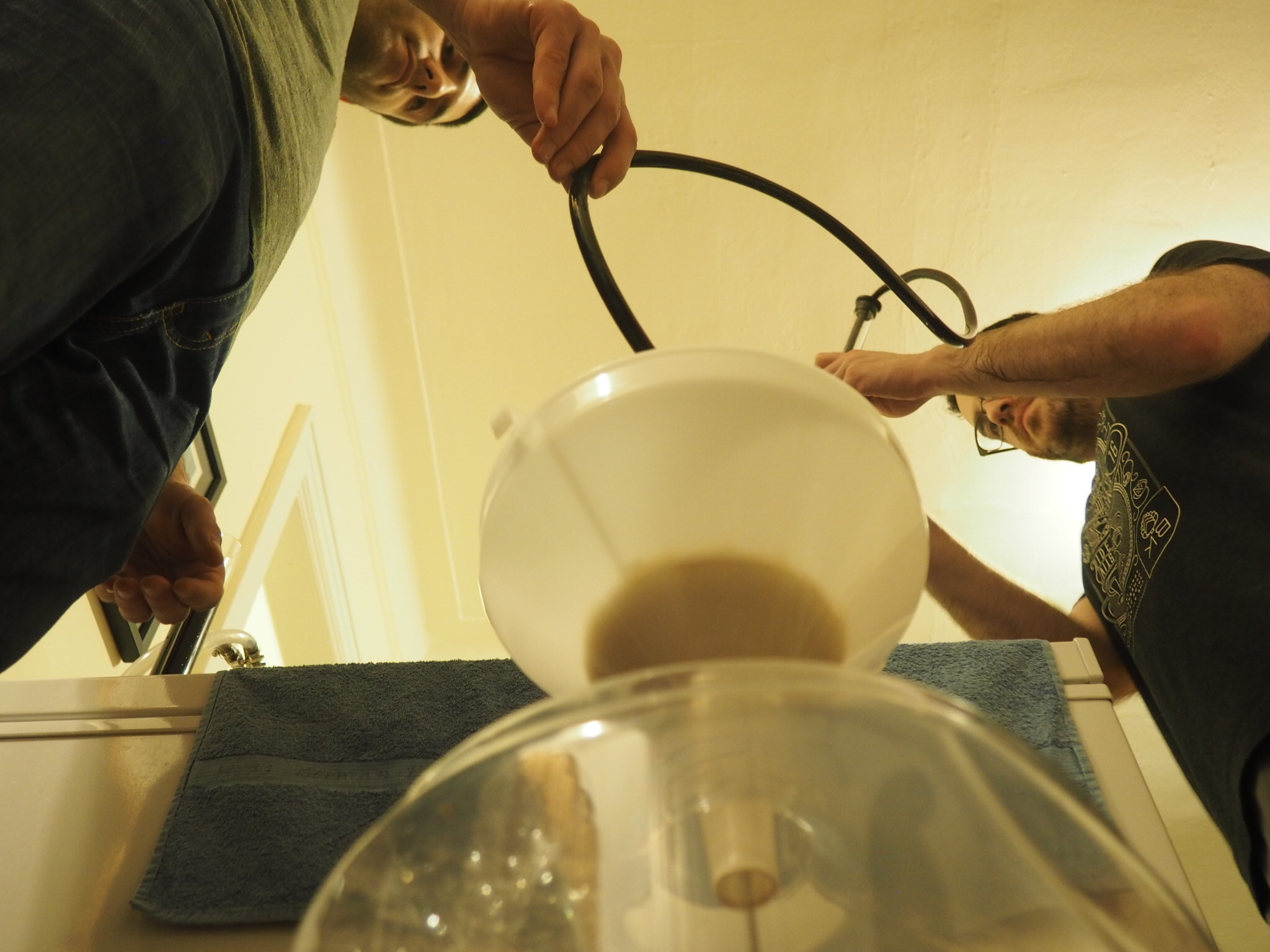
Soon Brandon was traveling non-stop, whether it was pouring his beers festivals or brewing collaboration beers. Breweries like Bottle Logic, J. Wakefield, 3 Sons all were willing to set up brew-days with Brandon. Things seemed like they were rolling, and then it all changed in February with one Instagram post. “It’s with great excitement for us to announce that our head brewer, Brandon Tolbert, will be leaving our family at the end of March to pursue his own dreams of opening a brewery,” the post read.
For the last year, Brandon had been open about his dream to open his own spot in Richmond, however, the news still was a bit of a surprise to craft beer community, especially in Richmond. “It wasn’t my decision to actually leave the brewery at the time,” Brandon says. “I guess we had different visions of where the brewery was going in the future,” he continues. “I wish Sean the best (new head brewer), he’s a great guy and brewer and he knows what he’s doing,” Brandon says, as we move towards are last stage of what has been a long brew-day.
We needed a boat-load of yeast to make sure our big beer ferments correctly. We decided for our brew-day to keep the original strand from my base recipe, Irish Ale aka 1084. A week prior to today, Andrew began our giant yeast starter, which we propped up through two different steps. Slowly, Andrew pours in hundreds of billions of yeast cells that have their work cut out for them with such a big beer. To make sure they don’t go hungry, we use our oxygen wand to feed our yeast before we put the finishing touch on our fermenter, a cork and a much needed blow-off tube.
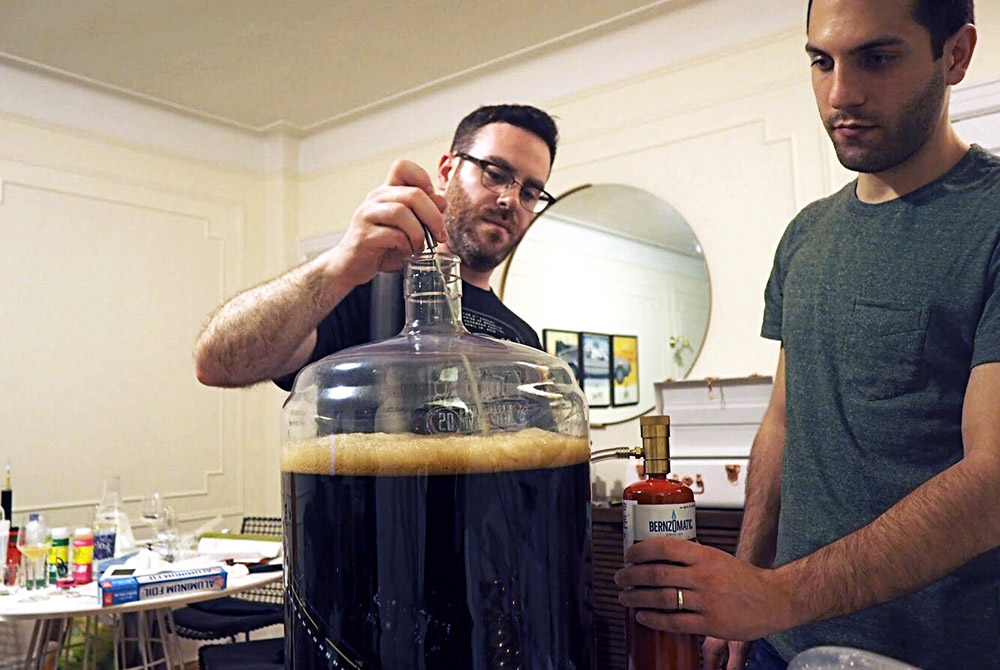
So what’s next for Brandon Tolbert? Safety Team Brewing Company. While there is not much to say about what this new brewery will entail, what we do know is it will be in Richmond, and we can expect the same great beers Brandon created at The Answer, as well as some new ideas Brandon has been toying with lately. “I’m excited,” Brandon says.
